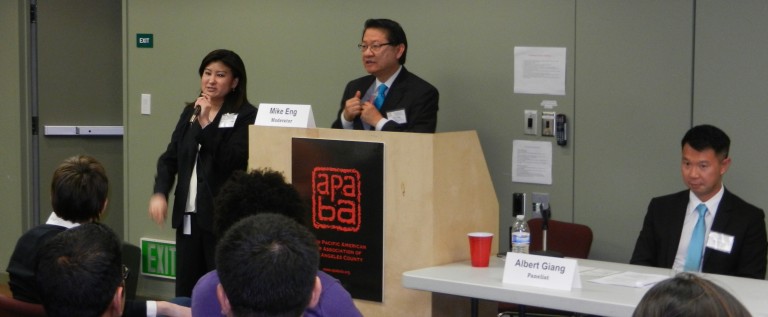The Fisher v. University of Texas Case and Asian Americans

When I was a senior in high school filling out my college applications, I remember casually checking the box next to “Asian” under the section inquiring about my race. I lingered briefly on the thought of whether being Asian would be an advantage or disadvantage to me as an applicant, and then moved on.
Policy that takes into account factors such as race, color, religion, sex, or natural origin, known as “affirmative action,” has been a hot subject of controversy and differing opinion for decades, particularly when applied to university admissions.
Most recently, the Fisher v. University of Texas case, which the Supreme Court recently ruled on, has captured the public’s attention. The case concerns Abigail Fisher, who alleges she was denied admission to the University of Texas in 2008 due to reverse discrimination on the basis of her race (she is white). Should the judges rule in Fisher’s favor, the outcome could effectively end affirmative action policies in admissions at US public universities.
In late May, I sat in on the Asian Pacific American Bar Association of Los Angeles County’s (APABA-LA) annual Asian Pacific American Heritage Month Event, entitled “A Panel Discussion on Fisher v. University of Texas: The Impact of Race-Conscious Admissions on the Asian American Community.” The speakers included moderator Michael Eng, former California Assembly member and LA County Community College Trustee-elect, and panelists Susan Wilbur, Director of Undergraduate Admissions at UCLA, Laboni Hoq, Litigation Director at the Asian Pacific American Legal Center, and Albert Giang, Caldwell Leslie and Proctor, who engaged in an absorbing discussion about the case and its broader ramifications. Whatever your stance may be on affirmative action, the event raised interesting perspectives and explored how affirmative action affects Asian Americans.
A History of Affirmative Action and University Admissions in the Supreme Court
To kick off the discussion, Mr. Giang touched on three major Supreme Court cases and provided a legal history of the use of affirmative action in university admissions. The first major case, Regents of the University of California vs. Bakke, set the precedent that universities could consider race in order to maintain student diversity. The court determined that although UC Davis Medical School’s minority admissions process at the time was unconstitutional – as in they couldn’t set aside seats for a specific race – the university could consider race as a “plus” factor in its admissions program in order to maintain a diverse student body.
Grutter vs. Bollinger was a landmark case in 2003 that upheld the constitutionality of the University of Michigan Law School’s affirmative action admissions policies “in the compelling interest of obtaining the educational benefits of a diverse student body.” The 5-4 decision, led by Justice Sandra Day O’Connor, also took into account that race was just one of several factors used in the individual admissions process. In Mr. Giang’s words, the case showed that “race does not have to be a last resort.”
In 2007’s Parents Involved in Community Schools v. Seattle School District No. 1, a non-profit group sued the Seattle School District, arguing that its racial tiebreaker, or the use of race-conscious admissions to determine which students could attend the district’s most popular schools, was unconstitutional. The court found the district’s policies to be unconstitutional, as the tiebreaker plan targeted demographic goals as opposed to any demonstrable educational benefit from racial diversity. In a separate opinion in agreement with the outcome, Justice Kennedy noted that the District’s use of race was unconstitutional, but emphasized that race-conscious admissions could be used to ensure equal educational opportunity.
The Fisher v. University of Texas case ruling will be made this month, with significant repercussions for both outcomes. Interestingly, the Asian American community itself is divided on the issue, with API organizations filing briefs on both sides of the case.
The Case for the API Community and Affirmative Action
The API community is incredibly diverse and comprised of numerous sub-groups, an important distinction that is often forgotten and masked by the successes by the Asian American community as a whole. This is often perpetuated through the model minority stereotype, as it ignores diversity within the API community, the history of suffering, and still prevalent racial discrimination that Asian Americans have endured, while also positioning the API community against other minority communities. Better data collection is needed to illustrate the difficulties that Asian Americans face.

Photos by Byron Shibata
An info sheet I received at the event put together by the Asian Pacific American Legal Center, Asian American Justice Center, Asian American Institute, and Asian Law Caucus details numerous reasons why the API community supports affirmative action. According to the handout, only 12% of Laotian Americans, 14% of Hmong and Cambodian Americans, and 14.4% of Native Hawaiians/Pacific Islands hold bachelor’s degrees or higher, compared to 31% of Caucasians. These subgroups would be negatively impacted if universities would to end their race-conscious admissions policies.
In the discussion, Ms. Hoq explained that affirmative action in the 1970s and 1980s opened doors for many Asian Americans, but following the success of several Asian subgroups, they were no longer considered “underrepresented” in the student body. This ended affirmative action for certain groups, but continued for others until 1996, when Prop 209 effectively ended affirmative action in California. As a result, the composition of schools drastically changed. As an example, 281 students at UC Berkeley were from the underrepresented Asian subgroups in 1989, which fell to just 80 in 2011. For Native Hawaiian and Pacific Islanders, admission rates ended up being closer to that of African Americans.
Additionally, there is the argument that affirmative action helps to narrow disparities in education and employment for Asian Americans, where the so called “glass-ceiling” is very apparent. For example, AAPI men hold 1.8% of board seats compared to 74.5% of Caucasian men, and AAPI women hold 0.3% of Fortune 500 board seats compared to 12.7% held by Caucasian women.
The Case against Affirmative Action
A study conducted by the Inter-university Consortium for Political and Social Research found that 63.1% of Asian Americans support affirmative action, and 62.6% of Asian American college students disagree with eliminating affirmative action. While this illustrates that more Asian Americans support affirmative action, it also shows that a sizable share of Asian Americans do not.
Several studies show that as a result of affirmative action, the API community actually has to perform better than their minority counterparts. One study by Princeton’s Thomas Espenshade found that Asian Americans who scored a perfect 1,600 had the same chances as getting into an elite college as white students who scored 1,460 and African-Americans who scored 1,150. Another study found that at some American universities, black applicants who scored 450 points worse than Asians on entrance tests were equally likely to gain admission.
Some opponents of affirmative action believe that the race factor should be eliminated entirely to ensure an equal playing field for everyone. In other words, the only way to stop racial discrimination is to stop discriminating based on race. Additionally, some affirmative action dissenters believe that an income-based admissions policy would be more fair, due to the strong relationship between a student’s socioeconomic status and their likelihood of attending college.
Race-neutral alternatives also exist for colleges, which Ms. Wilbur touched upon during the panel discussion. Expanding outreach programs to K-12 institutions to enhance the academic preparedness of incoming students and reducing reliance on standardized tests are examples of initiatives the UC system has implemented.
Perhaps Frank Wu, Chancellor and Dean of the UC Hastings School of Law, and William Kidder, senior policy analyst at UC Davis, framed the issue best in an article they wrote together in 2006. “It is possible, of course, for reasonable people to have different opinions about the fairness and effectiveness of affirmative action,” they wrote. “It would not be productive, however, for us to believe that Asian Americans must oppose Blacks and Latinos, as the fact of the nation changes profoundly and irrevocably. We can and must do better, by building bridges among all of us who share a vision of diverse democracy.”
Let us know in the comments: Do you support or not support the use of affirmative action in university admissions policy? What does “student diversity” mean to you?





